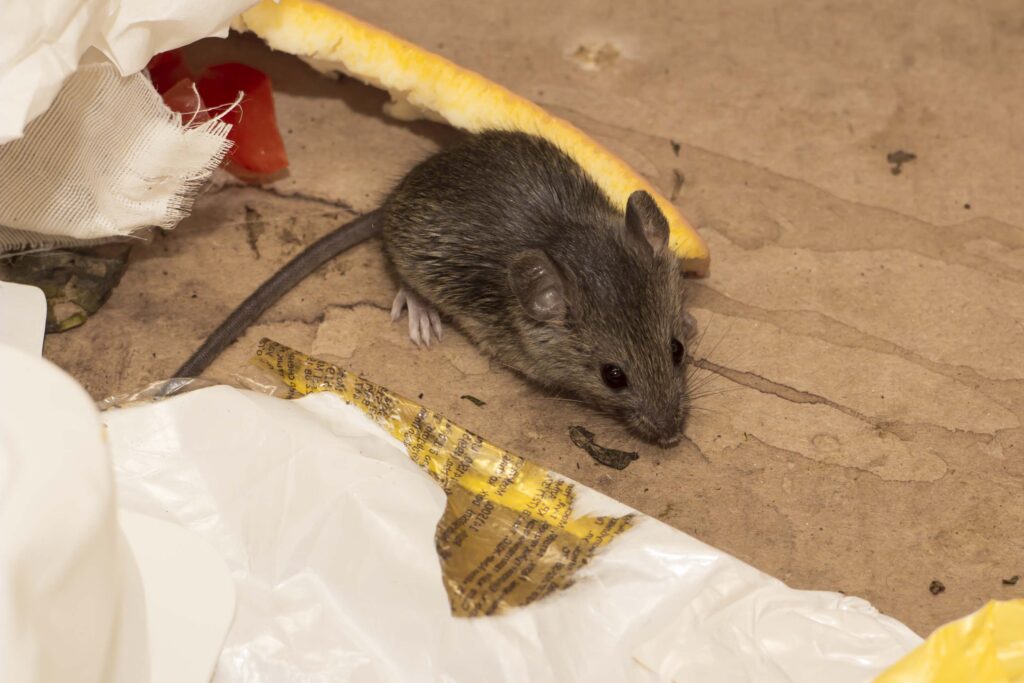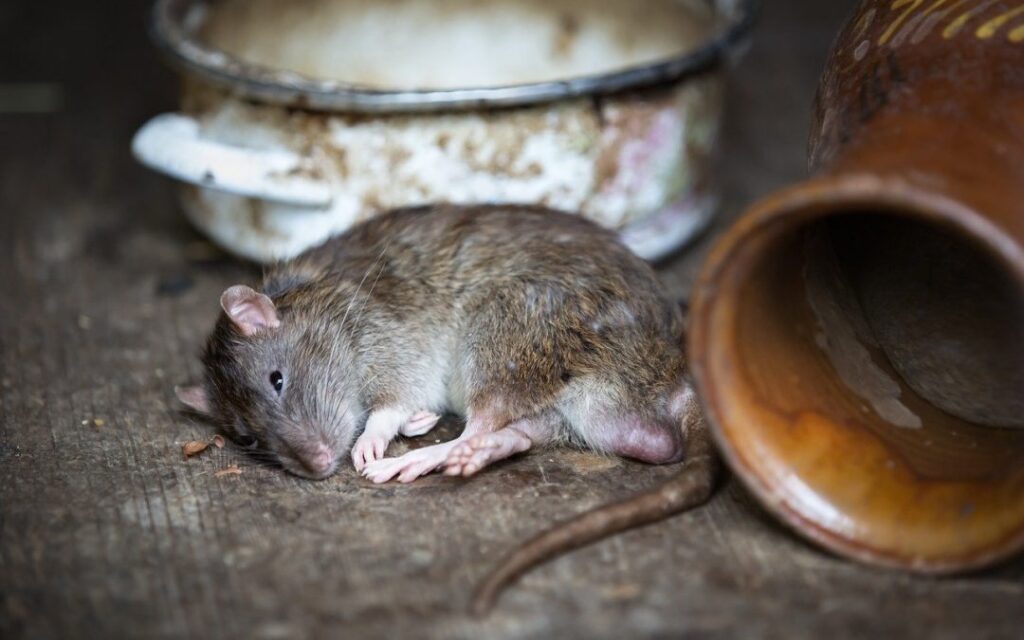How to Identify Whether You Have Rats or Mice in Your Sydney Home?
Rodent control Sydney success depends on accurate rats or mice identification. The two species require different control strategies due to their distinct behaviors, nesting habits, and entry methods.
Physical Characteristics
Professional termite pest control sydney can confirm which rodent species you’re dealing with through thorough inspections. Misidentification leads to ineffective treatment, wasted money, and continued infestation. When you’re uncertain about Rodent Control Sydney: How to Tell If You Have Rats or Mice, expert assessment ensures the right approach from the start.
Physical characteristics provide the clearest distinction:
- Rats are significantly larger (20-25cm body length), with thick, scaly tails and blunt noses.
- Mice measure only 7-10cm, featuring thin tails and pointed snouts.

Droppings
Their droppings differ too:
- Rat droppings resemble large grains of rice (12-18mm).
- Mouse droppings are tiny pellets (3-8mm).
What Are the Health Risks Associated with Having Rats or Mice in Your Home?
Both rats and mice carry dangerous bacteria and pathogens that pose serious health threats to Sydney households. These rodents transmit diseases through their urine, droppings, saliva, and even through bites when cornered.
Common Diseases Transmitted by Rodents
Here are some of the most common diseases that Sydney residents may encounter due to rodent infestations:
- Salmonellosis: Contaminated food or surfaces expose families to severe gastrointestinal symptoms including diarrhea, fever, and abdominal cramps. Children and elderly individuals face heightened vulnerability to this bacterial infection.
- Leptospirosis: This bacterial disease causes flu-like symptoms initially but can progress to kidney damage, liver failure, and respiratory complications without proper treatment. Sydney’s humid climate creates ideal conditions for leptospira bacteria to survive in the environment.
- Hantavirus: Early symptoms mimic the flu, yet the infection can rapidly develop into Hantavirus Pulmonary Syndrome, a potentially fatal respiratory condition.
Risks to Pets
Pets also face significant risks from these diseases:
- Dogs and cats can contract leptospirosis directly from rodents or contaminated areas, requiring immediate veterinary attention.
- Secondary poisoning occurs when pets consume rodents that have ingested rodenticides, creating additional health emergencies.
- Young children who play on floors or touch contaminated surfaces face particular risk of exposure to these pathogens.
What Signs Indicate a Rat Infestation in Your Sydney Home?
Signs of Rat Infestation
Signs of rat infestation Sydney homes experience include contaminated food packages with gnaw marks and scattered droppings measuring 10-20mm in length. Rats leave dark, capsule-shaped droppings around food sources, along walls, and in cupboards where they’ve been foraging.
Physical Evidence of Rat Activity
Physical evidence around your property reveals the extent of rat activity:
- Burrows near building foundations: rats dig tunnel systems 45-90cm deep near walls, under decking, or beneath garden sheds
- Grease marks along walls: their oily fur leaves dark smudges on surfaces they regularly travel across
- Gnaw marks on wood, plastic, and wiring: fresh gnawing appears lighter in colour than surrounding material
- Nesting materials: shredded paper, fabric, and insulation gathered in hidden areas
Understanding Rat Movement
Rats can jump vertically over 70cm and horizontally up to 120cm, allowing them access to elevated spaces like roof cavities and upper-floor entry points. Their athletic abilities mean standard barriers won’t deter them.
The Significance of Spotting a Single Rat
Spotting a single rat signals a serious problem. Rats are nocturnal and avoid human contact, so daytime sightings indicate overcrowding in their nest. A breeding pair produces 5-10 offspring every 3-4 weeks, meaning one rat quickly becomes dozens. They establish nests only where consistent food sources exist, so their presence confirms your home provides everything they need to thrive and multiply rapidly.
What Signs Indicate a Mouse Infestation in Your Sydney Home?
Signs of Mouse Infestation
Mouse infestations reveal themselves through tiny droppings (about 3-6mm long) scattered near food sources, along baseboards, and inside cupboards—much smaller than rat droppings. These signs of mouse infestation residents should watch for include dark, rice-shaped pellets that appear fresh and moist when the infestation is active.
Nesting Areas and Sounds
Mice create discreet nesting areas within wall cavities, roof spaces, behind appliances, and inside stored boxes using shredded paper, fabric, and insulation materials. You might hear scratching sounds inside walls during quiet hours, particularly at night when mice are most active.
Reproduction Rate
The reproduction rate makes mouse problems escalate rapidly. A single female produces 5-10 litters per year with 5-6 pups each time, meaning a small problem becomes severe within weeks. This exponential growth explains why early detection matters for effective Rodent Control.
Entry Points
Mice exploit remarkably small entry points:
- Gaps as narrow as 6mm (roughly the width of a pencil)
- Cracks in foundation walls and plaster
- Spaces around utility pipes and cables
- Gaps beneath doors and windows
- Drain pipes and ventilation openings
Their flexible skeletal structure allows them to squeeze through openings that appear impossibly small, making thorough property sealing essential for prevention.
Which Rodent Control Methods Are Commonly Used in Sydney?
Trapping remains one of the most direct rodent control methods Sydney homeowners rely on. Snap traps deliver instant results when placed along rodent pathways, while humane traps allow for catch-and-release options. Both require strategic positioning near walls where rodents typically travel.
Rodenticides offer powerful solutions for severe infestations. These poisons effectively eliminate rodent populations but carry significant risks—they’re toxic to all mammals, including children and pets. Proper placement in tamper-resistant bait stations and careful handling are essential when using these products.
Electronic deterrents use ultrasonic frequencies to discourage rodent activity. These devices emit high-pitched sounds inaudible to humans but irritating to rodents, though their effectiveness varies depending on room layout and interference from furniture.
Exclusion techniques prevent rodents from entering your property in the first place. This method involves:
- Sealing cracks and gaps in walls, foundations, and rooflines
- Installing door sweeps and weather stripping
- Covering vents with fine mesh screens
- Repairing damaged roof tiles and eaves
To effectively get rid of rodents, baiting strategies enhance trap effectiveness significantly. Peanut butter proves particularly attractive due to its strong scent and sticky consistency, while cheese works well for mice. Fresh bait replaced every few days maintains maximum appeal to hungry rodents seeking food sources.
When Should You Consider Professional Rodent Control Services in Sydney?
Professional pest control Sydney services become necessary when DIY methods fail to resolve the problem or when you spot multiple rodents regularly. Large infestations require expert intervention because they indicate established colonies that reproduce rapidly and spread throughout your property.
Persistent rodent activity despite your control efforts signals the need for professional help. If you continue finding fresh droppings, hearing scratching sounds, or discovering new damage after implementing traps and exclusion methods, the infestation likely extends beyond what household solutions can manage.
Professional services typically include:
- Comprehensive property inspections to identify entry points and nesting areas
- Strategic bait placement in locations inaccessible to children and pets
- Customized exclusion advice based on your property’s vulnerabilities
- Ongoing monitoring to prevent re-infestation
- Safe rodenticide application following regulatory guidelines
Treatment costs in Sydney range from $150 to $400 for single visits, depending on property size and infestation severity. Larger properties or severe infestations requiring multiple treatments increase the total investment.
The expertise professionals bring ensures safe chemical handling, protecting your family and pets from accidental exposure. Licensed technicians understand rodent behavior patterns, allowing them to target problem areas effectively. They also provide documentation and warranties that guarantee results, offering peace of mind that DIY approaches cannot match.
How Can You Prevent Rodent Infestations in Your Sydney Home?
Preventing rodents in Sydney starts with eliminating the three things that attract them: food, water, and shelter. A proactive approach reduces the likelihood of dealing with rats or mice before they become a problem.
1. Cleanliness and Decluttering
Rodents thrive in cluttered spaces where they can hide and nest undisturbed. Remove stacks of newspapers, cardboard boxes, and unused items from storage areas, garages, and basements. Clean kitchen surfaces daily and sweep up crumbs immediately.
2. Sealing Entry Points
Inspect your home’s exterior for:
- Gaps around pipes and utility lines
- Cracks in foundation walls
- Damaged weather stripping on doors
- Holes in window screens
- Openings where cables enter the building
Mice squeeze through gaps as small as 6mm, so seal even tiny cracks with steel wool, caulk, or metal sheeting.
3. Food Storage Practices
Store pantry items in airtight glass or metal containers rather than original packaging. Keep pet food in sealed bins and avoid leaving bowls out overnight. Clean up fallen birdseed from feeders regularly.
4. Moisture Control
Rodents need water sources to survive. Fix leaking taps, repair dripping pipes, and ensure proper drainage around your property. Remove standing water from plant saucers and check for condensation issues in basements.
5. Regular Inspections
Conduct regular inspections to catch early warning signs before infestations develop. This knowledge is essential for homeowners to identify potential rodent problems.

Are There Humane Alternatives for Rodent Control in Sydney?
Humane rodent control Sydney options focus primarily on live-capture traps that allow for relocation, though this approach comes with important limitations. While wildlife regulations in New South Wales permit humane capture and relocation for protected species like possums, rats and mice are classified as pests without the same protections.
How Live-Catch Traps Work
Live-catch traps work by luring rodents into enclosed boxes without harming them. Once captured, the challenge becomes relocation—releasing rats or mice into new areas often transfers the problem elsewhere or results in the animal’s death due to territorial conflicts and lack of established food sources.
The Ethical Dilemma of Rodent Control
Ethical considerations in rodent control center on balancing compassion with practical effectiveness. Many Sydney homeowners struggle with the decision between lethal and non-lethal methods, particularly when dealing with large infestations that threaten health and property.
A Comprehensive Approach to Humane Rodent Control
The most effective humane rodent control Sydney strategy combines multiple approaches:
- Prevention-first methods that exclude rodents without harm
- Targeted trapping in specific problem areas
- Professional assessment to determine the most appropriate intervention
- Habitat modification to make properties naturally uninviting
Understanding whether you’re dealing with Rodent Control Sydney: How to Tell If You Have Rats or Mice helps determine which humane methods might work best. Mice respond better to small live traps, while rats require larger, more robust equipment. Professional pest controllers can guide you toward solutions that align with your values while effectively protecting your home.
Related : Termite Removal vs Termite Protection in Sydney: What’s the Difference?

